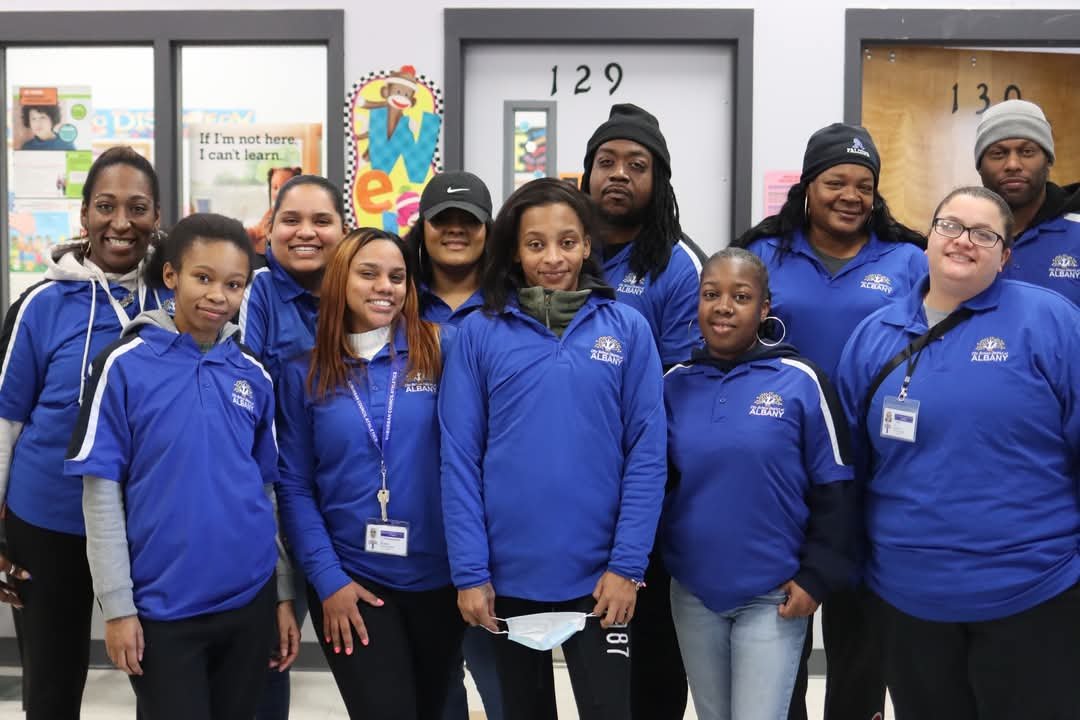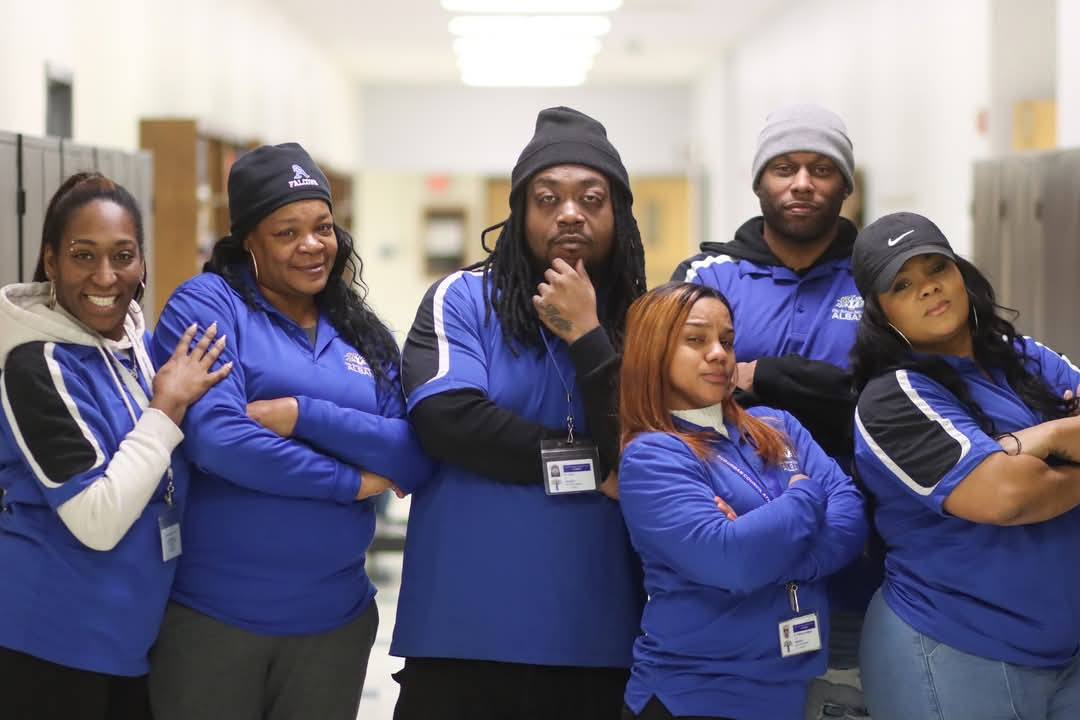Late January The Nest sat down with Albany High School’s Principal, Ms. Commerford, to gain insight into building security initiatives in light of some challenges experienced at Albany High School.
When asked “What expectations do you have for teachers in helping to address behaviors in the classroom?”, Ms. Commerford responded by saying that she believes most issues happen in hallways, to which she is working on decreasing. Also, whenever students are off, teachers attend professional development, which she believes helps them be trained to manage classroom issues.
Ms. Commerford also hosts course offering assemblies per grade level including the incoming middle school students. To wrap up this question, she added, “You know I am so proud of all of our teachers here at Albany High School, because I have to say, it’s amazing to me, we get so few classroom discipline incidents, I think they are engaging in the classroom so I don’t think they are really many behavioral issues in the classroom.”
Another topic discussed surrounded initiatives to increase positive behavior, “Can you describe any recent planned initiatives, like pep rallies, or the recent lunch discussions that align with the goal of promoting “positive behaviors” in our school?” Ms. Commerford mentioned that she hosts volunteer luncheons with the principal on select Fridays, doing it on a volunteer basis, because students wanted the choice to come. However, she didn’t get the high turnout she wanted, but received great participation and conversation surrounding concerns, and ideas, regarding entry, security procedures in morning, and issues in community that students struggle with and how it impacts them at school.
While some students don’t experience the same community issues and the impact varies, these issues can be easy to overlook for the masses. Ms. Commerford has been doing teen nights once a month, and she wants to do them more because it gives students a positive outlet. She mentioned that when she held a movie night last year it inspired her.` While there wasn’t a huge turnout originally, she went into the library after school and told people there was food and a movie and received great feedback, with people texting friends to come. “That’s when it occurred to me that many of our Falcons didn’t have something to do on a Friday night.” She said this experience inspired teen nights, and she wants to do them every two weeks, having more things at night beyond athletics and clubs where kids can hang out.
Surrounding security during entry in the morning Ms. Commerford was asked, “How does the administration balance the need for security measures with a welcoming school environment?” In response, she mentioned that a huge part of the lunch group discussions focused on morning entry, where she had students placing blame, saying it feels like checking into a prison walking into school.
As the building principal, an equilibrium needs to be found between making students feel safe coming into school but not feeling like walking into prison. The current machines include metal detectors that are sensitive machines to any metal. There is currently no pat down method (something the board of education policy would have to consider to get approved), or x-ray machines like at airports. However, if students set off metal detectors, security will wand them, pat down coats, and ask students to flip belt buckles. Issues arise with pat downs and create obstacles with separating people in lines based on gender, triggering stress for people who don’t identify with either. Security for a building this large with such a massive student body presents many challenges to unpack and consider.
Ms. Commerford added that the school implements changes in protocols and plans when necessary, including increasing the number of security guards as construction areas have grown, in addition to securing 15 new hall monitors this school year, and doing a two-week security monitor onboard training, the longest training to date.
Security also has “senior” monitors, who will pull monitors throughout the day and have meetings. On non-instructional days like parent teacher conferences and teacher training days, monitors will have professional development training too, which includes support for the security team. In fact they had done the national coalition building institute, where students and hall monitors participated, moving to build a caring school environment. Through this, some students identified certain monitors as their point people/mentors. Doing this is their attempt to have full collaboration, not just having it all on the teachers.
The school/community connection is extremely important. When asked, “In what ways has the school partnered with the community to enhance school safety beyond what’s outlined in the Code of Conduct?” Ms. Commerford mentioned that the night before our interview they had held a parent university that was hosted specifically after events that prior week. Also, the school had previously partnered with SNUG- an Albany anti-violence organization- and brought on a resource police officer stationed at the high school.
Weeks prior, the mayor had come with all the elected officials to discuss issues happening in the city, letting the school know that they wanted to be partners with the school district. The superintendent was there, as well as the community coordinator, and organizations like the red bookshelf, who come in for teen nights.
In terms of needed supports, Ms. Commerford was asked, “What additional resources or support does the school need to fully implement the safety goals outlined in the Code of Conduct?” To this, she said “I really think it is that support from the community. I think often schools get lots of pressure to take on societal/community issues, that school needs to take on what happens outside of learning here.” A lot of that has to do with understanding that a lot of students aren’t skipping, but are staying home because a lot of their basic needs aren’t being met. Ms. Commerford said she hasn’t met a student after 26 years in education who has violated the code of conduct without there being something going on in their life. “A students not acting out because they’re bad, right? Something bad is going on in their life, and so it’s our job to figure it out so we can make sure they are successful.”
And what about involving students in the process? When asked, “How does the school plan to involve students in the ongoing process of improving school safety, such as student-led round table discussions or small group assemblies aimed at fostering a positive learning environment?” Ms. Commerford said that is why she hosts the luncheons. She had 6-10 students who were interested in those conversations and wanted to do some work with her. On top of that, she usually starts by raising these issues with the Falcon Council, and works with them to see their thoughts and ideas. From there, they will come up with an action plan.



